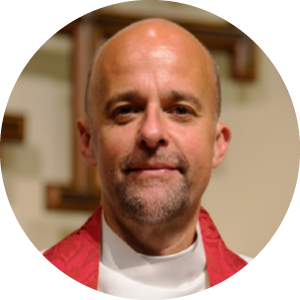This is the second in a three-part series of essays by John Clark and CPT fellow Marcus Johnson. You can read part 1 here and part 2 here. Content in this article has been adapted from Johnson and Clark’s book, The Incarnation of God: The Mystery of the Gospel as the Foundation of Evangelical Theology (Crossway, 2015).
As we have seen in the first two installments of this mini-series on the meaning of the Incarnation (see links above), reflecting on the Word become flesh draws us into rich and nourishing truths that lie at the very center of Christian faith and salvation. The deep significance of the Incarnation does not stop there, however. A Christian understanding of the nature and life of the Church is also profoundly shaped by consideration of the existence of Jesus Christ, who is both fully God and has a fully human body. We need venture no further than that word – body – to begin to grasp the momentous mystery of the Church, the body and bride of Christ. As we are told in the Holy Scriptures, Christ became one flesh with His Church (Eph. 5: 31-32). Without the great and unparalleled miracle of the Incarnation, the Church cannot be who she actually is: the body of Christ.
The incarnate Son of God is the actual living reality of the church. Not because the church is composed of those who, sharing a similar faith, voluntarily gather together to perpetuate his memory, follow his teachings, and continue his mission in his absence. Jesus Christ is the present and living foundation of the church because by faith we have been incorporated in him – that is, united into his body. We are the recipients of his saving blessings and his communion with the Father through the Spirit, continually drawing our life and nourishment from his resurrected and glorified humanity, and thus participating in his mission of recreating and reconciling the world to God. Because the church inheres in him as his body and bride, she participates not only in all that he is as Savior but also in his active presence to the world. “Thus the church has no independent existence, as if it were anything at all or had any life or power of its own, apart from what is unceasingly communicated to it through its union and communion with Christ who dwells in it by the power of the Spirit and fills it with the eternal life and love of God himself.”[1] As with salvation, the existence of the church is not a blessing Christ bestows to us apart from himself, but the blessing of participating in who he is and what he does.
So intimate is that participation that the church is referred to in the most astonishing way, namely, as the body of Jesus Christ. It is to be greatly regretted that this phrase has been largely emptied of significance, reduced as it so often is to a figure of speech or illustrative analogy. As the common and peculiarly modern hermeneutical wisdom has it, the phrase body of Christ is not much more than a linguistic or poetic device, drawn from the realm of physical anatomy, that the Apostle Paul uses to illustrate the cohesiveness and ideal social functioning of the church. The church, in other words, is the body of Christ “so to speak.” Or, the church is to function “as if” she were one physiological or socio-political body. The under-interpretation at play here evidences a jettisoning or obscuring of the very meaning of the in-carna-tion: “to be made into flesh, to be embodied.” The whole goal of the Son’s en-fleshment was the re-constituting of our humanity through his life, death, resurrection and ascension. The Son of God took our bodily existence into union with himself, so that through Spirit-wrought faith we may be brought into union with the only Savior there is – the incarnate One. Any union with him that did not include his body and ours would not be redeeming. So unless we wish to succumb to an implicitly docetic soteriology – in which case our saving union with Jesus Christ would be merely meta-physical – we would do well to delight in what Paul calls the profound mystery of the church’s one-flesh union with her bridegroom (Eph. 5: 31-32).
The mysteries that are uncovered in God’s self-revelation in the Son and Word of God are not meant to be explained by imposing a logic alien to that revelation. They are meant to provide the ground for creaturely apprehension and adoration of the transcendent realities of God’s mighty redemptive acts. In the case of the mystery of the church’s union with Christ this means that we confess and adore the reality that we are indeed the body of Christ, yet in a way that transcends mere physiological, philosophical, or social explanation. While figures of speech and illustrations are never profound mysteries, and in any case are hardly worth adoring, the mystery of our bodily participation in Christ is certainly both. It was the confession of this profound and mysterious reality that drove Paul to one of the most breath-taking utterances in Holy Writ: “And God put all things under Christ’s feet and gave him as head over all things to the church, which is his body, the fullness of him who fills all in all” (Eph. 1:23). Aside from the fact that this passage does not read in any straightforward way as an analogy or illustration, the Greek in this verse is emphatic: hestis estin to soma auto – the church “which is indeed, or in truth, his body.”[2]
In 1 Corinthians 6, furthermore, Paul precludes non-bodily interpretations of the church’s union with Christ. Incredulous that some in the church were uniting their flesh to prostitutes, Paul directs them to the one-flesh union in which they already exist: “Do you not know that your bodies are members of Christ?” The Corinthians, it seems, were the historical archetype for all who would spiritualize, sentimentalize or otherwise under-interpret what it means that the church is indeed the body of Christ. Paul puts an abrupt end to all such interpretive reductionisms, insisting that the church really is the body of Christ, for no less a reason than that our bodies are joined to his. Having grasped this, how differently might we interpret what Paul writes just six chapters later? “For just as the body is one and has many members, and all the members of the body, though many, are one body, so it is with Christ” (1 Cor. 12:12). Accustomed as we are to read this as an illustrative analogy that Paul constructed from human anatomy to foster church unity, we badly miss his point. Notice that Paul does not say “so it is with the church,” which is how an analogy might begin, but rather “so it is with Christ.” It is Christ himself, and his body which includes ours, who is the ground for our unity.[3] Paul is not inventing a convenient analogy for pedagogical purposes, for which purposes some other analogy might have been just as fitting. On the contrary, he is driving home the momentous reality of our bodily union with Jesus Christ, and from that fundamental reality calls the church to function as she really is: his body. He thus concludes and punctuates his point: “Now you are the body of Christ and individually members of it” (12:27). Taken as an empty metaphor or pedagogical device, the church as the body of Christ becomes just another sentimentalizing abstraction, a cute yet ultimately vapid phrase that blinds us to the fundamental reality of the church, which is her union with the incarnate Son of God. “The expression body of Christ,” insists Simon Chan, “is more than a metaphor for some intimate social dynamic between Christ and his church. It is an ontological reality, as Christ is ontologically real.”[4] To say that the church is the body of Christ denotes the reality that Christ is not who he is apart from his church, “which is his body, the fullness of him who fills all in all” (Eph.1: 23). That Christ would so identify himself with his church, Calvin thought, is our exceedingly great consolation and comfort:
This is the highest honour of the church, that, until he is united to us, the Son of God reckons himself in some measure imperfect. What consolation is it for us to learn, that, not until we are along with him, does he possess all his parts, or wish to be regarded as complete.[5]
The joyful recovery of a truly evangelical ecclesiology will surely require a return to the conviction that the Church is constituted by her participation, in both soul and body, in the very life of the incarnate Son of God. The incarnation of the Son of God means that Christ has a body, and the deepest truth of the Church is that she is the body of Christ. Calvin is right: we have no greater consolation than that!
Notes:
[1] T.F. Torrance, Theology in Reconstruction, 205.
[2] See Frank Thielman, Ephesians, Baker Exegetical Commentary on the New Testament (Grand Rapids, MI.: Baker, 2010), 112. See also Harold Hoehner, Ephesians: An Exegetical Commentary (Grand Rapids: Baker Academic, 2002), 290.
[3] The mystery of Christ’s human body transcends our categories, capable as his body is of including our bodies within it, without ever ceasing to have its own spatio-temporal existence, and always being infinitely greater than the sum of its churchly parts. As Paul J. Griffiths reminds us, Christian discourse about bodies should begin, not with our bodies, but with Christ’s body: “Christ’s body is, first, the most real of all bodies: it belongs to the second person of the Holy Trinity. . . . Among other bodies, it is this one that for Christians is of primary and unsurpassable significance, this one in terms of which all other bodies must be thought about and understood” (“Christians and the Church,” in Oxford Handbook of Theological Ethics, ed. Gilbert Meilaender and William Werpehowski [Oxford: Oxford University Press, 2005], 400).
[4] Chan, Liturgical Theology: The Church as Worshipping Community (Downers Grove, IL.: IVP, 2006), 27.
[5] Comm, Eph.1:23.
This resource is part of the series God in Flesh – Reflections on Advent and Incarnation. Click Here to explore more resources from this series.
Marcus Johnson is a Professor of Theology at the Moody Bible Institute. He also serves as an Associate Rector at St. Mark’s Church in Geneva, IL. He holds a PhD from the University of Toronto. He is the author of One with Christ: An Evangelical Theology of Salvation and the coauthor (with John Clark) of The Incarnation of God: The Mystery of the Gospel as The Foundation of Evangelical Theology. He and John Clark will release a second book, A Call to Christian Formation: How Theology Makes Sense of Our World, in July 2021. He is a member of the St. Peter Fellowship of the Center for Pastor Theologians.
John Clark is a Professor of Theology at the Moody Bible Institute. He holds a PhD from the University of Toronto. He has written two books with Marcus Johnson (see above).




